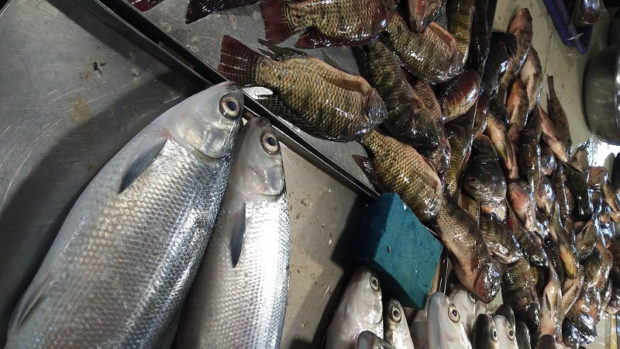DOST alarmed by microplastics found in bangus in Agusan

Milkfish (bangus) and tilapia. (INQUIRER.net photo)
MANILA, Philippines — About 60 percent of particles pulled out from bangus (milkfish) samples in Butuan City and Nasipit in Agusan del Norte province were confirmed to have concentrations of microplastics — an alarming discovery that should spur further study to achieve a “standardized” toxicity threshold for human consumption, according to a group of researchers.
A research team at the Department of Science and Technology’s (DOST) National Research Council of the Philippines (NRCP) led by Dr. Rey Capangpangan found that 235 of the 385 extracted particles from 30 bangus samples culled from fish cages in the said areas had microplastics.
READ: Bangus, tilapia prices in NCR stable — BFAR
The NRCP-funded study that was released over the weekend revealed the “pervasiveness of plastic pollution” in the country’s marine waters.
“The Filipinos living in an archipelagic country and relying on its fresh and marine water bodies, are at risk of ingesting microplastic-contaminated aquatic organisms,” Capangpangan said in a statement.
“With this data, we can start to see the extent of microplastic pollution and start its mitigation,” he added.
Article continues after this advertisementMicroplastics are plastic debris broken down into tiny pieces with a length of less than five millimeters, according to science journals.
Article continues after this advertisementREAD: Mindanao study finds microplastics in ‘bangus’
No data
The DOST, however, said the risks of eating food contaminated with microplastics have yet to be “estimated,” as there is no available data yet on the toxicity of such particles.
“The impact of ingesting microplastics for humans has yet to be determined. Its toxicity depends on how much is consumed, though some particles are small enough to penetrate human tissue,” it added.
Marybeth Banda, who was part of the study, stressed that the “chemical nature [of microplastics] allows them to attract and accumulate other toxic substances on their surfaces.”
This prompted NRCP researchers to call for a “harmonized protocol” about the microplastics’ toxicity level to be able to gauge its adverse impact on humans, as it is “not enough to count microplastics,” the DOST said.
The Philippines produced about 353,000 metric tons of bangus last year, based on preliminary data from the Philippine Statistics Authority.